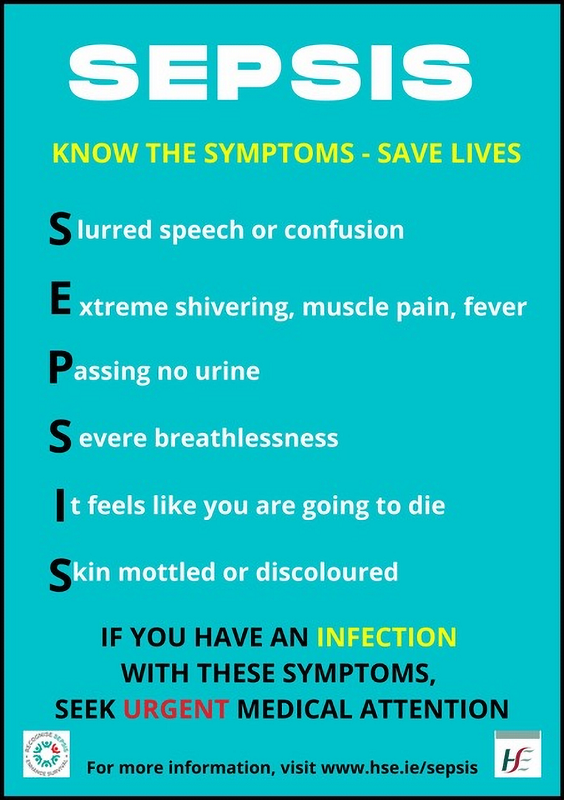Medical leaders at Letterkenny University Hospital are urging people to get to know the symptoms of sepsis to save lives.
Tomorrow is World Sepsis Day, and Saolta is using the global event to raise awareness of the life threatening condition.
Sepsis can occur when the body develops an infection which then affects the organs such as heart, lungs, brain and kidneys. If not treated quickly, sepsis can be fatal. There are around 15,000 cases of sepsis in Ireland each year.
Due to COVID-19, this year’s World Sepsis Day will be a little different. Letterkenny University Hospital will hold internal education sessions for staff to highlight further the importance of prompt recognition of the signs of sepsis which will assist with immediate medical action and better patient outcomes.
Posters and pull-up stands emphasising ‘know the symptoms – save lives’ will be displayed throughout the hospital.
Fiona Christensen, Sepsis Lead at Letterkenny University Hospital explains, “Sepsis is a common time-dependent medical emergency which can affect a person of any age and can strike irrespective of underlying good health or medical conditions. However, early recognition and timely treatment can have a major impact and this is the message we want to get out, ‘Think Sepsis’. Sepsis awareness is an on-going project to increase awareness for all healthcare staff, patients and the wider community.”

Fidelma Gallagher, Group Sepsis Lead, Saolta Group, said, “Globally sepsis is the biggest health threat; in 2017 sepsis affected a staggering 48.9 million people and claimed the lives of 11 million worldwide. Manifestations of sepsis and septic shock are frequently the final pathway for emerging infectious disease threats such as the COVID-19 pandemic contributing to the overall global burden of sepsis.
“Most deaths from sepsis can be prevented by simple measures of infection prevention, vaccination, clean care, and early recognition. Antimicrobial resistance (AMR) can jeopardise clinical management of sepsis. In addition, the steadily growing threat of AMR contributes considerably to the enormous human, medical and economic burden of infectious diseases. Outbreaks in hospitals of infections with resistant microorganisms are increasingly common.”
Further information on sepsis is available from www.hse.ie/sepsis.
Tags:





